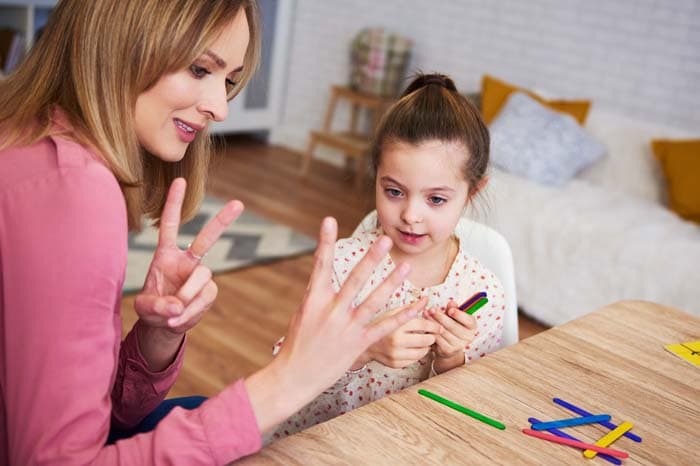Lectures can sometimes be monotonous and lengthy, leading students to lose interest and focus. However, the key to an effective lecture isn’t just about conveying information but about engaging students in a way that makes learning interesting and enjoyable. Wondering how to engage students in class? Look no further! Here are ten practical strategies for lecturers and educators:
Activities to engage students
- Start with a Question or a Real-world Problem
- Integrate Multimedia Elements
- Frequent Interactive Polls and Quizzes
- Incorporate Group Discussions and Debates
- Use Case Studies and Real-life Examples
- Facilitate Peer Teaching
- Encourage Open-ended Questions
- Create a Collaborative Learning Environment
- Provide Immediate Feedback
- Use Humour and Personal Stories
Begin your lecture by presenting a challenging question or a real-world problem relevant to the day’s topic. This approach is akin to setting a narrative hook, compelling students to invest mentally as they anticipate the unravelling of the answer. Engaging students’ natural curiosity from the outset ensures that they are primed and attentive, eager to follow the narrative arc of your lecture to its conclusion.
In the digital age, students are accustomed to a multimedia-rich environment. Incorporating videos, animations, sound bites, and infographics not only simplifies complex topics but also caters to various learning styles. For instance, visual learners benefit immensely from diagrams and videos, while auditory learners might appreciate podcasts or sound clips. These diverse mediums can punctuate your lecture, providing breathers and ensuring sustained attention.
The integration of technology in classrooms has revolutionised teaching methodologies. By sprinkling your lecture with real-time polls or quick quizzes through platforms like Kahoot or Mentimeter, you create interactive checkpoints. These moments allow students to consolidate their understanding and offer you a glimpse into their grasp of the material. Moreover, these elements add an element of gamification, making learning more fun and competitive.
Transform passive listening into an active exchange of ideas. Allocate time for students to share their perspectives on topics, debate contentious issues, or collaboratively solve problems. Such discussions not only solidify their understanding but also enhance soft skills like communication, teamwork, and critical thinking. In a diverse classroom, multiple perspectives can also bring in cultural and individual nuances to the topic at hand.
Theoretical knowledge gains depth and relevance when tied to real-life scenarios. Case studies, drawn from real businesses, historical events, or current news, present opportunities for students to apply what they’ve learned. This application-based approach reinforces learning and underscores the practical relevance of theoretical concepts.
There’s truth in the saying, “To teach is to learn twice.” By encouraging students to teach or explain concepts to their peers, they reinforce their understanding. It also brings out varied interpretations and methods of explanation, benefiting both the ‘teacher’ and the ‘learner’ in this peer dynamic.
While closed-ended questions have their place, open-ended questions spur deeper thinking. They prompt students to reflect, reason, and articulate their thoughts, pushing them to engage with the material at a deeper level. Such questions can lead to enriching class discussions and often uncover angles of a topic that might not have been addressed in the lecture.
With tools like Google Docs or online collaborative whiteboards, students can work together on projects or notes in real-time. This sense of collective ownership and teamwork keeps them engaged. Moreover, it encourages the shy or reticent ones to participate, as they can contribute in writing. Over time, this can foster a class culture where students actively collaborate, share, and learn from one another.
Timely feedback is crucial for learning. Instant responses to quizzes or immediate remarks on an in-class assignment provide students with a clear understanding of their strengths and areas for improvement. This real-time critique is invaluable, allowing them to adjust their learning strategies promptly.
Stories are powerful tools for engagement. Weaving personal anecdotes or humorous incidents into your lecture makes it relatable and memorable. These elements humanise the educator, making them more approachable and building a ber educator-student rapport.
We hope you like the list of activities to engage students. Here are 3 bonus active learning techniques.
Incorporate Movement and Physical Activity
Long lectures can lead to physical lethargy, which can impact mental alertness. Integrate short physical activities or movement-based tasks related to the topic. For example, a kinesthetic approach to a physics lecture might involve students enacting the movement of particles. These short breaks refresh students and cater to those who learn best through movement.
Incorporate Active Learning Techniques
Active learning is all about student engagement and participation. Techniques like brainstorming sessions can spark creativity; role-plays can bring theoretical scenarios to life, and simulations can provide virtual hands-on experience. These methodologies transform students from mere note-takers to enthusiastic participants, deeply invested in the learning process.
Leverage Storytelling Techniques
Storytelling isn’t just for literature or history classes. Any topic can be made more compelling when presented as a narrative. By structuring your lecture like a story, with a clear beginning, conflict, and resolution, you create a natural curiosity and flow that keeps students engaged. Start by setting the scene with an introduction that outlines the ‘characters’ (which could be concepts or historical figures) and the ‘setting’ (the context or environment). Introduce a ‘conflict’ or problem that needs to be resolved; this can be a common misconception, a historical dilemma, or a scientific challenge. As the lecture progresses, guide students through the ‘plot’ as they explore different ‘storylines’ (theories or perspectives) and head towards the ‘climax’ (the key turning point or revelation). Conclude with a ‘resolution’ that ties all the elements together, providing closure and a comprehensive understanding of the lesson. This method not only keeps students interested but also helps them remember the material by linking it to a narrative structure that is easy to recall.
We hope this answers the perennial question, “How to engage students in class?” Incorporating these strategies will not only improve student engagement but will also lead to more productive lectures and better learning outcomes.
Remember, the foundation for engagement starts at a young age. And speaking of young learners, EuroKids stands out for providing quality early education in India. If you’re looking for a pre-school that focuses on holistic development, active learning, and ensures that every child is engaged and enthusiastic about learning, EuroKids is the place to be. After all, a child who is engaged early on will grow up to be a student who stays engaged during lectures.
In conclusion, the art of engaging students is a blend of creativity, interactivity, and understanding their needs. With these strategies in your toolkit, you’re sure to deliver lectures that not only impart knowledge but also keep your students hooked on every word!














